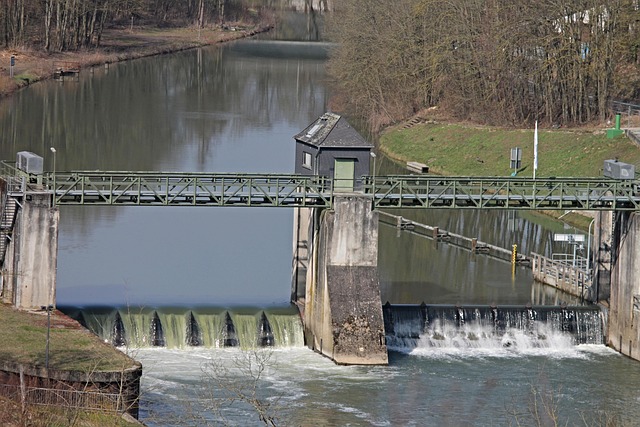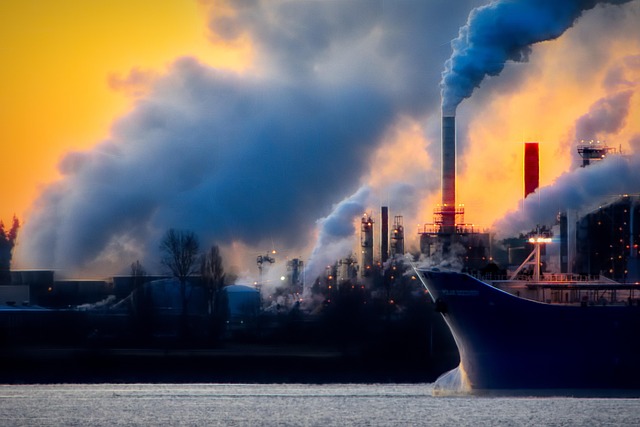Air pollution, caused by industrial, vehicular, and residential sources like NOx, SO2, PM, and CO, poses severe health risks. Smart city management focuses on sustainable transport policies to curb emissions. Governments enforce strict environmental regulations, including Select Emissions Regulations, for vehicles and industries, utilizing advanced technologies for pollution control. Electric vehicle adoption and real-time monitoring systems are key to achieving cleaner air, especially in urban areas where ozone preservation is critical. Strategic adherence to regulations and technological innovation ensure minimal environmental impact from power plants and manufacturing facilities.
Air pollution, a global concern, arises from diverse sources like industrial activities, transportation, and domestic heating. Understanding these origins is pivotal to mitigating their detrimental effects on human health and the environment. This article explores comprehensive strategies for air pollution control, delving into regulatory frameworks that govern emissions, advanced technologies, and practical implementation steps. Key focus areas include understanding select emissions regulations, ensuring effective system design, and long-term sustainability in the battle against air pollution.
- Understanding Air Pollution Sources and Impact
- Regulatory Framework for Emissions Control
- Advanced Technologies in Pollution Mitigation
- Implementing and Maintaining Effective Systems
Understanding Air Pollution Sources and Impact

Air pollution is a complex issue arising from diverse sources, including industrial activities, vehicular emissions, and residential heating. To effectively control it, understanding these sources and their impacts is paramount. Industrial facilities emit various pollutants like nitrogen oxides (NOx), sulfur dioxide (SO2), and particulate matter (PM) through manufacturing processes and power generation. Vehicles contribute significantly to air pollution, particularly in urban areas, through the release of harmful gases such as carbon monoxide (CO), volatile organic compounds (VOCs), and NOx, especially from older models not adhering to stringent automotive emissions rules.
Residential sectors also play a role, with heating systems and cooking activities generating PM and other pollutants. The cumulative effects of these sources can lead to severe health issues, including respiratory diseases, cardiovascular problems, and even premature death. Environmental protection agency guidelines emphasize the need for smart city air quality management, advocating for sustainable transportation policies to reduce emissions. By identifying and addressing major pollution sources, governments and urban planners can implement effective strategies to combat air pollution, ensuring cleaner air and better public health.
Regulatory Framework for Emissions Control

Air pollution control systems are guided by a robust regulatory framework designed to enforce strict environmental emission policies. These regulations target various sectors, with specific focus on vehicle emissions through car exhaust gas regulations worldwide. Governments, in collaboration with international bodies, have established standards that dictate permissible levels of pollutants in atmospheric emissions from both vehicles and industrial facilities. The implementation of these stricter environmental emission policies involves regular inspections, emission testing, and the adoption of advanced control technologies by manufacturers.
In addition to these broad-scale measures, smart grid emission management plays a crucial role in reducing pollution. This approach leverages digital infrastructure to optimize energy distribution and consumption, thereby minimizing greenhouse gas emission caps for factories. By integrating renewable energy sources and implementing efficient practices, industries can significantly contribute to global efforts to combat air pollution.
Advanced Technologies in Pollution Mitigation

The advancement of technology plays a pivotal role in the continuous battle against air pollution. Modern solutions now offer more efficient and targeted approaches to mitigate harmful emissions, especially with the implementation of stringent Select Emissions Regulations. One notable development is the integration of advanced monitoring systems that provide real-time data on pollutant levels, enabling authorities to make informed decisions promptly. These technologies can precisely identify sources of contamination, leading to more effective strategies for control.
Moreover, the rise of electric vehicle adoption policies and the implementation of efficient vehicle emission systems are significant contributors to cleaner air. As the automotive industry shifts towards electrification, traditional combustion engines are being replaced by electric motors, significantly reducing tailpipe emissions. This transition, coupled with stricter regulations on vehicle emissions, is a game-changer in the fight against air pollution, especially in urban areas where stratospheric ozone layer preservation is of utmost importance.
Implementing and Maintaining Effective Systems

Implementing effective air pollution control systems requires a strategic approach, especially when considering select emissions regulations. Organizations must first assess their specific industry and operational needs to determine the most suitable technologies. For instance, in power plants and industrial facilities, advanced filtration systems, scrubbers, and condencers are often employed to capture and neutralize harmful pollutants like sulfur dioxide (SO2) and nitrogen oxides (NOx), which are significant contributors to acid rain and smog.
When it comes to electricity generation emissions, adhering to global vehicle emission norms and environmental protection agency guidelines is crucial for sustainable transportation policies. These regulations push manufacturers to innovate, leading to the development of cleaner technologies. Regular maintenance and system upgrades are equally vital to ensure these controls remain efficient over time, minimizing the environmental impact and contributing to a healthier atmosphere.
Air pollution control systems are essential components in mitigating environmental impact and ensuring sustainable development. By understanding various sources and effects, adhering to regulatory frameworks like strict Select Emissions Regulations, and adopting advanced technologies, we can implement effective solutions. Continuous monitoring and maintenance are key to sustaining these systems, fostering a healthier environment for future generations.
